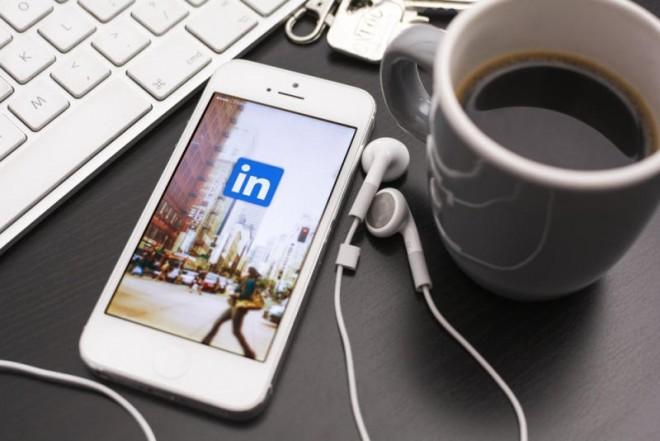Kim Brown is an assistant director for Syracuse University's Career Services department. She spends a good portion of her day looking over LinkedIn profiles for job seekers and students. She makes sure candidates are putting their best foot forward on LinkedIn. Here are the most common mistakes Brown sees job seekers make on LinkedIn.
Your profile is full of typos
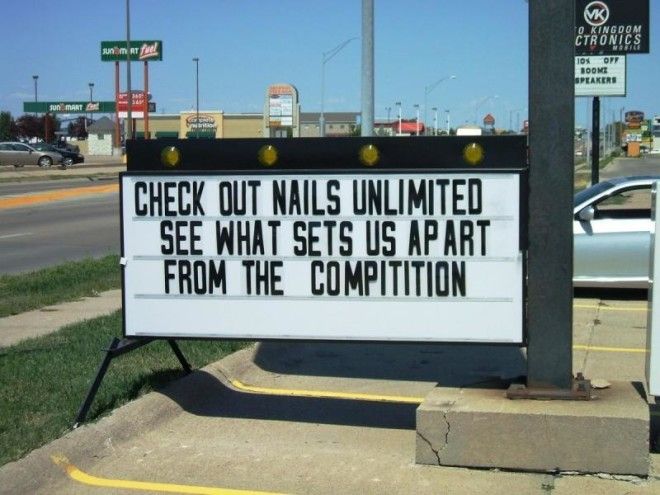
Brown says she's spotted typos in company names, job titles, and even in the user's name. Unfortunately, LinkedIn doesn't have a built-in spell checker, but your browser might. Safari, Chrome, and Firefox underline misspellings in red. Bottom line, whatever you use: Be as careful on LinkedIn as you would be with a paper resume.
You have no picture in your profile

Adding a picture to your LinkedIn profile can make a world of difference to a recruiter. Studies have shown that LinkedIn profiles with pictures are much more likely to get clicked on than those without. LinkedIn says you're 14 times more likely to be viewed if you have a photo.
You have a profile picture, but it's a photo of you and your significant other (or worse)
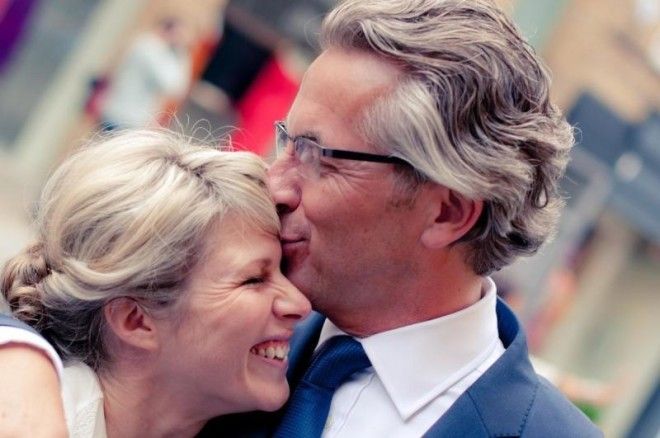
Do not get LinkedIn and Facebook confused, says Brown. Facebook is for personal pictures, LinkedIn is for professional ones. Brown recalls one student who came to her, frustrated because he couldn't find a job. When she checked out his LinkedIn, she saw that he had chosen a photo of himself doing The Chicken Dance at a wedding. Oof. Stereotypical, duck-faced selfies are another big no-no that Brown's started noticing more often. She also says she sees a lot of people link to their Facebook profiles from their LinkedIn pages. Don't do this. It's best to keep the two profiles separate.
You don't have a background photo or any other visuals either

You can now add a background photo to make your profile stick out, too. You should pick something that matches your brand, Brown says — for example, hers is of the SU campus — and make sure that your file is big enough that it doesn't end up looking stretched and pixelated.
LinkedIn also allows you to upload all sorts of rich media — like documents, photos, links, videos, and presentations — to your profile, and if you don't take advantage of that you're missing out.
"Your LinkedIn isn't just words anymore," Brown says. "You should really be paying attention to the visuals you can add to your profile."
You haven't put any thought into your profile headline

Brown says she sees a lot of people simply put "Student at X University" as their lead LinkedIn headline. She also sees a lot of professionals who are looking for jobs with old titles as headlines. You have a lot of room to be descriptive in this area of your profile!
"If you're a job seeker and you have a [vague or outdated] title, I have no idea you're looking for work," says Brown. So, it's better for a student to write that they're an "Advertising major at Syracuse University who has experience with nonprofit work" or for a job seeker to write, "Experienced advertising professional looking for a opportunities in the med-tech space." Her official job title comes in the "Experience" section of her profile. Even people with concrete job titles should use the headline space to give more detail about what they do and are passionate about. Brown's headline, for example, reads "I help SU students and alumni to craft their career stories | Connector | Speaker | LinkedIn Trainer | CNY Promoter." Never, never write "unemployed" — highlight what you're looking for, instead.
You're not reaching out to people through LinkedIn Groups

LinkedIn can be a great tool for networking, but messaging a complete stranger can be awkward. Try finding people who are in a group you share in common. This helps break the ice, says Brown. For example, if you're a Syracuse University alumnus, message a fellow Syracuse person from the Alumni Network before sending a blind InMail. But pick and choose your recipient carefully: You're only allowed to send 15 messages a month to other group members.
You're not personalizing LinkedIn connection requests
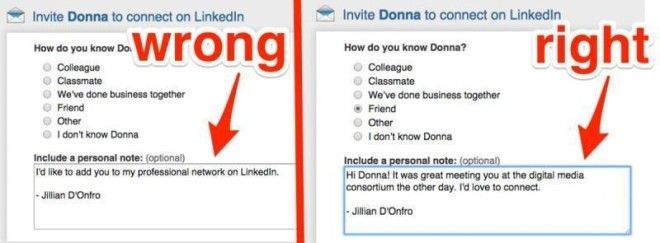
When you connect to someone for the first time on LinkedIn, don't just use the generic message option, "I'd like to add you to my professional network on LinkedIn." Take a few moments to write something personalized, says Brown. It will make the recipient more open to your request and the message feel less spammy. Also, never lie about how you know the person. Lying is almost a guaranteed way to kill your chances at connecting.
You're "connecting" with people from LinkedIn on your phone
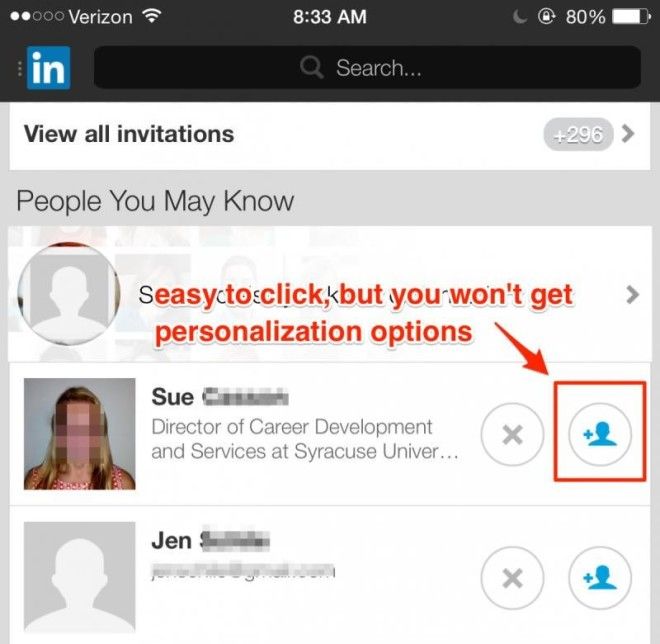
LinkedIn's now has a whole suite of useful apps. The flagship lets you connect to people with a click—but you can't customize the message."People will say to me, 'Well, I didn't personalize my message because I couldn't on my phone,'" says Brown. "It's not an excuse. Get on your computer and connect that way."
Wiggle room: The nice thing about connecting via smartphone is that you can do it immediately after meeting someone, in which case a message isn't as important. You also run a greater risk of typos on your phone though.
You haven't created a unique LinkedIn URL

"The head of business development for a big company contacted me, and he had his LinkedIn profile link in his signature," says Brown. "It was [Joe]-[Smith]-8346974. Who would think [all those numbers] look okay? It looks terrible. Definitely customize your URL."
To customize your LinkedIn URL, press the "Edit Profile" button. Click the gear symbol next to your URL, which will take you to a separate page where a "Your public profile URL" box will let you change the link. Try to get as close to your first and last name as possible. Avoid cutesy nicknames or usernames.
You never bothered to fill out a summary

Filling out the summary portion of your LinkedIn profile is crucial if you want to pop up in search results. "The summary is the most important part," says Brown. "Having search terms and key words in your summary that are related to the job you're doing or want to do is going to make you more likely to be found by the recruiters and hiring managers who are searching LinkedIn for talent."
You don't "stalk responsibly" or take advantage of it when someone's checking *you* out

Any LinkedIn user can see who's viewed their profile recently, but if you limit your public profile settings, less of your information will be revealed to the person you've checked out on LinkedIn. The trade-off: You won't see as many details about who's visiting your profile, either. Getting insights can be super valuable, so being public is a plus. Just stalk responsibly. "If you're job seeking and you're looking at the same person's profile 59 times in a two-week period, you should probably make yourself anonymous," says Brown. "Don't be creepy."
If you've noticed someone checking out your profile in a field or at a company that interests you, though, it can't hurt to message them to start a dialogue.
You haven't broken your profile out into sections
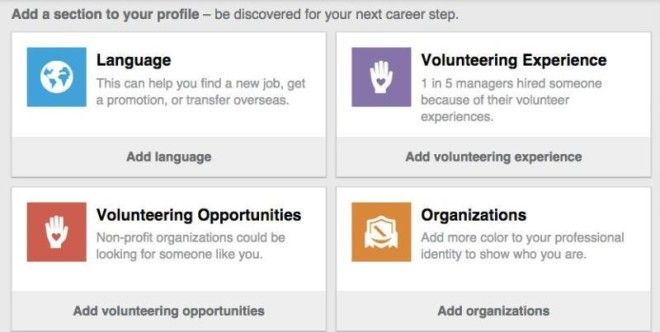
It's not just about your summary and work experience: You can add volunteering experiences, organizations you're part of, honors you've received, projects you've worked on, and more to your LinkedIn. A lot of profiles are just one long block of text, but breaking it into different parts makes it easier for people to scan and for you to highlight certain parts that you think are particularly important. "Don't be afraid to play around with the order of the sections," Brown says. For example, if you're a recent grad and your course work is more valuable than any of your previous jobs, drag the "projects" section above the "experience" section.
You list "skills" that LinkedIn doesn't recognize
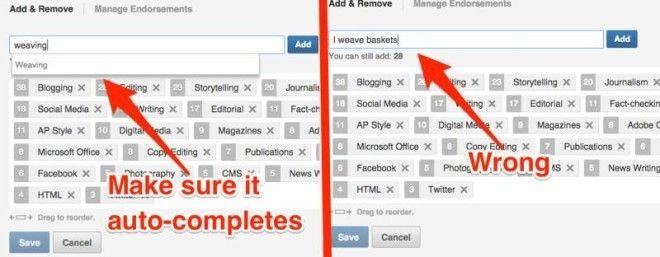
Adding a bunch of skills to your profile is a good way to easily flaunt your chops and make yourself more searchable, but if you write something obscure that LinkedIn doesn't recognize, it doesn't do you much good. When you start typing a skill on your LinkedIn profile, make sure it appears in the dropdown menu. If it doesn't, it may be spelled wrong, or it's not a frequently searched item, which won't help your resume get found by recruiters.
Stick to the thousands of skills LinkedIn already has in the system and your profile will pop up more often in search results. You can also allow people to "endorse"
You don't have (credible) recommendations
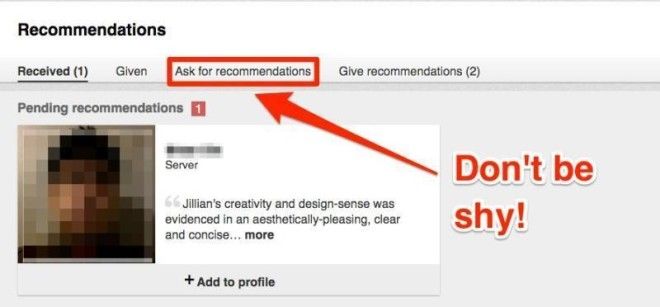
Brown says it's important to have recommendations on your LinkedIn profile. But not just any old recommendation—it should come from someone who's reputable and it should speak to your specific qualifications. "A lot of times recommendations are really generic," says Brown. "Such as, 'Alyson would be an amazing asset to your company because she is a hard worker and a wonderful addition to our office.' Well, great. How about something more detailed, like about that time you worked on a specific project together?"
Make sure the recommendation someone writes for you isn't applicable to every other candidate. Getting these recommendations may require asking for them. Navigate to the "Privacy and Settings" tab, then to "Profile," and you will see a link for "Manage my recommendations." That section will prompt you to send a message to a boss or coworker.
You're not posting photos, posts, or work-centric updates

Don't fill out your profile and then forget about LinkedIn. Radio silence on your feed is bad news. More than ever before, the site makes it easy to keep your network up-to-date on what's going on in your professional world through updates, photos, posts, and comments. "Make it a point to once a week do something," Brown advises. "Share an update with your network. Put up a photo of an event that you attended. Comment on someone's post. You want to show up in the network feed, and the way you show up is by doing those things." You can solidify yourself as an expert on a topic by publishing posts, too, which often get thousands of views from professionals across LinkedIn.
You're not engaging with your network

"The 'Keep in touch' section is a lazy networker's dream," Brown says. Under the "Connections" tab, LinkedIn makes it dead simple to find little ways to connect with people in your network. You can see congratulate someone on a work anniversary, new job, or switching cities. There's no excuse to feel overwhelmed by the prospect of maintaining a relationship.
You haven't left yourself helpful little reminders or scheduled reconnection nudges
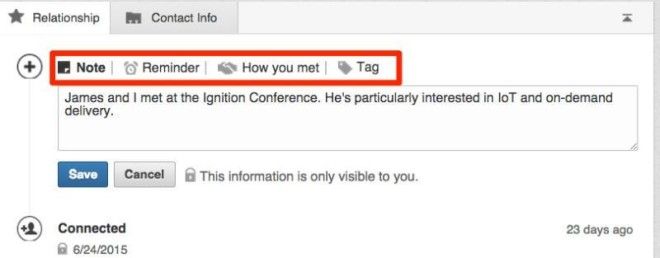
Every time you connect with someone new on LinkedIn, you should get into the habit of feeling out information in the "Relationship" tab that will appear on their profile. You can add notes about their interests, info about how you met, and even reminders to reach out to them again in a week, a month, or on a recurring cycle. "Don't worry, it's only visible to you," Brown says.
You're not exporting all your contacts

Want to make it easy to take your LinkedIn conversations off the site, or make sure that you'll still have access to your contacts if you lose access to your account? You can export all of your contacts into an Excel file with their name, job title, and email. Go to the main Connections tab, press the gear symbol in the right-hand corner, and then click "Export LinkedIn Connections" under "Advanced Settings." Viola! There are a bunch of different file formats you can use when exporting "This is one of the biggest 'a-ha' moments that everybody has when I teach LinkedIn classes," Brown says.
You're not taking advantage of the "Find alumni" option

Recently, LinkedIn has really amped up the way it lets you find people who went to your university. You can see all the people who attended your college who studied a certain major or were in your year. You can even search for a specific company, and see all the alumni who worked there. This is great for networking, reconnecting, or planning reunions. "You can use it for a ton, a ton of different purposes," Brown says. "It's like an in-depth yearbook."
BONUS: You're not using advanced search tools when hunting for a job
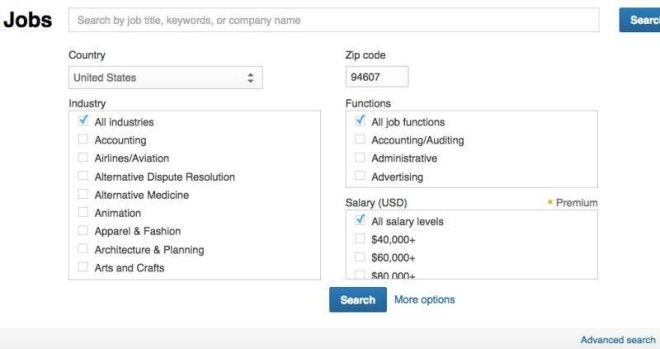
This one may seem a little obvious, but if you use the advanced search tab, you're much more likely to turn up relevant career opportunities than if you just conduct broad queries. Instead of just searching by the name of the company or person, you can search by keyword, industry, location, and more. You can also save searches, save jobs you're interested in, and even apply, right through the site.
